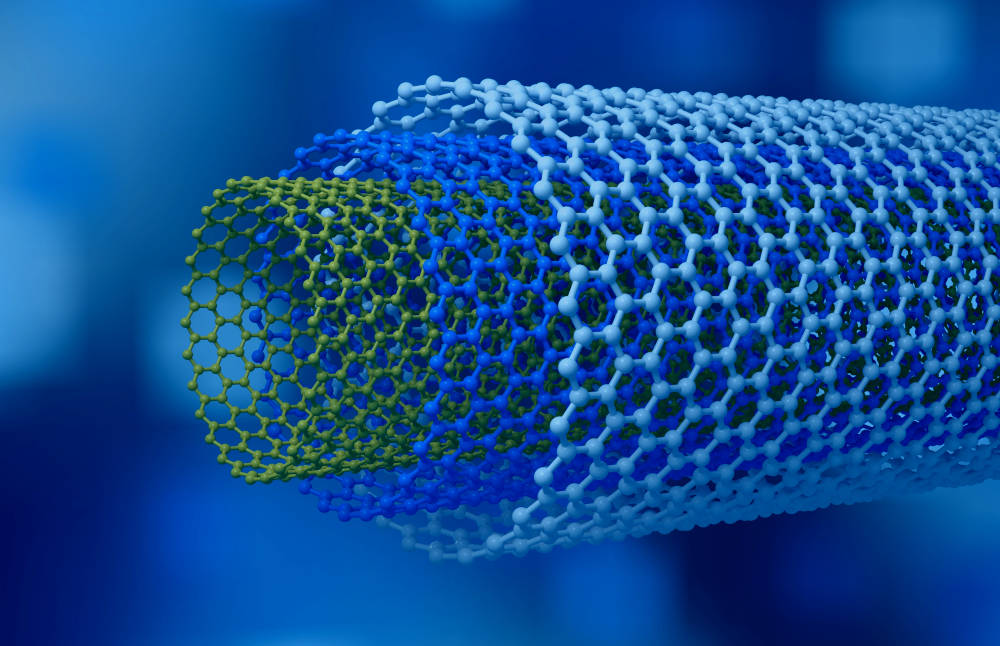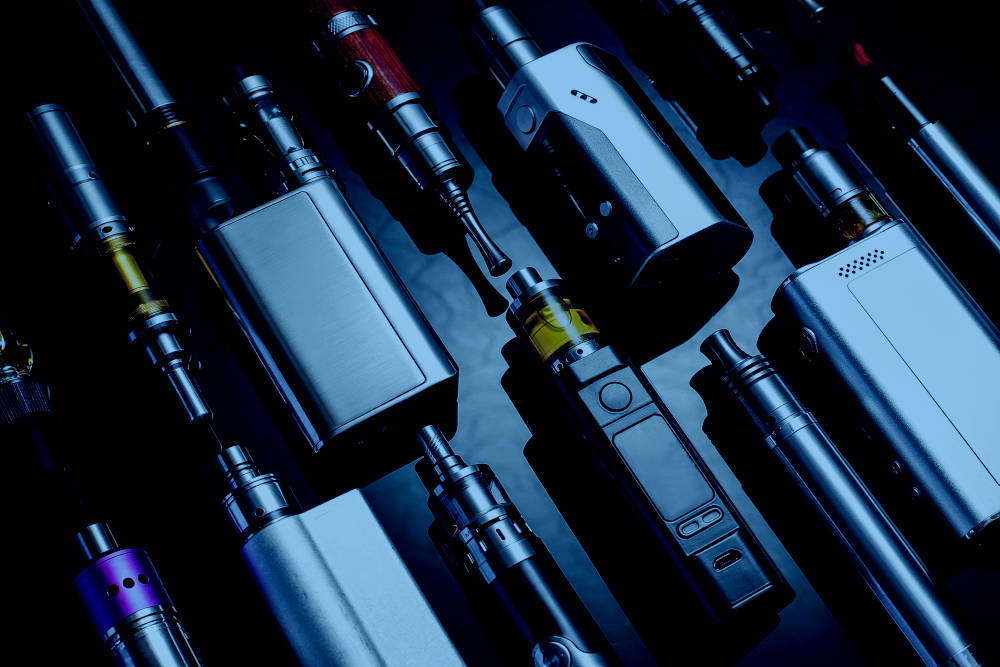The Top 10 Fastest Growing Technologies of 2023
IFI CLAIMS is in the seventh year of our annual Top 10 Fastest Growing Technologies—a ranking measured by five-year growth rates of patent application classifications—and each year brings a certain element of surprise. One surprise in the list’s inaugural 2017 year: e-cigarettes, the technology behind vaping, took the top spot, ahead of the transformative and exciting technologies of aerial drones, autonomous driving, machine learning, and 3D printing. But electronic smoking, it turns out, is changing the direction and revenue segments of the tobacco industry as more people worldwide either quit traditional smokes or never take up the habit in the first place.
Fast-growing technologies don’t always include the latest, greatest, coolest, most new-frontier arenas of invention. We’re also surprised by the appearance of fast-growing technologies from “old economy” industries. Staying with the theme of smoking, here’s a surprising technology placement on this year’s list: Cigarettes—yes, the traditional kind. And this is the second year in a row that regular, old cigarette technology has made the top ten. What does that suggest? Despite the pullback from conventional smoking around the world, it is still a big business with plenty of pricing power. As such, it’s a cash cow and worthy of R&D investment.
A couple more surprises to note: machine learning fell out of the top ten this year; so did computing arrangements based on biological models. Both of those technologies had been stalwarts over the past few years. But that’s the thing about growth. The bigger something gets, the harder it is to be considered “fast-growing.” And though generative AI (the kind of AI found in ChatGPT) was the big technology everyone was chasing in 2023, you’ll probably be surprised that it’s not on our list. For good reason though. It’s nascent. And it also takes patent authorities quite a while to define and classify new bands of expertise, so we’re not sure when those classifications will be more fully realized. It’s worth noting that in the last two years, we’ve seen an intensification of growth in classes related to image and video recognition—and that definitely speaks to generative AI.
Without further ado, see below for IFI’s Top 10 Fastest Growing Technologies for 2023. Results are based on patent applications, a better proxy for novelty than grants because grants tend to lag at least 18 months after first application.
U.S. Applications: 2023 Count and Growth from 2018 to 2023
Up, Up, and Away
To come up with our list of fastest growing technologies, IFI CLAIMS measured the frequency of CPC codes in U.S. patents over the past five years and then calculated the compound annual growth rate (CAGR) of each code. The scatterplot above represents the total number of patents and the growth for each technology. The chart is interactive. Click on the graph to see more information about each code.
Evolution of Tech Over Time
Fast Growth Patent Applications Have Dwindled Over Time
IFI CLAIMS categorized more than 3,000 technologies within the nine overarching inventive categories to see which technologies are getting the most coverage. Only two categories noticeably increased from last year: the general category that covers new technologies, including climate change mitigation, ahead by 34% and electricity, up by almost 3%.
10 Destroying Solid Waste or Transforming Solid Waste Into Something Useful or Harmless
CPC Code: B09B 3

Waste Away
Despite our best efforts to live more sustainable lives, there’s no denying that we live in a disposable world. Between the single-use paper coffee cups with the cardboard sleeve to protect our hands from the heat and the widespread practice of buying new appliances, which is less money and hassle than fixing what we have, we’re in the habit of throwing things away. There is a patent class for that. It’s a verbose one called “destroying solid waste or transforming solid waste into something useful or harmless.” And it’s been growing at 20.7% over the past five years. The class covers everything from disposal of asbestos and medical waste to melting, softening, compressing and absorbing the discarded. Unicharm, a Japanese company that specializes in disposable personal hygiene products like diapers for infants and adults, has been applying for the most patents in this space.
Growth of Destroying or Transforming Solid Waste
Leading Applicants for Destroying or Transforming Solid Waste
9 Electric Digital Data Processing
CPC Code: G06F 2113

Moving Information Along
Electrical digital data processing covers the gamut—from fuselages to smart water infrastructure systems, from wind turbines to additive manufacturing, a process that “adds” material to fabricate a product instead of deleting it (think 3D printing). The overall growth rate for the technology is 20.8%. At the head of this class is HP, the computer, printer, ink and toner company, followed by denim maker Levi Strauss, and aerospace manufacturer Boeing. One pending application from HP, US-20230315048-A1, that uses this technology class is a system that detects anomalies in 3D printers. Another pending application from Autodesk, US-20230324882-A1, a software maker for the architecture, engineering, and construction industries, puts forth a generative design process for computer-aided design (CAD) and manufacture.
Growth of Electric Digital Data Processing
Leading Applicants for Electric Digital Data Processing
8 Nanotechnology for Information Processing
CPC Code: B82Y 10

Patents for the Science of Itty Bitty
Many patent technologies are difficult to imagine. Nanotechnology for information processing is one of them. When picturing the smallness of nanotechnology—if you’re the kind of person who pictures nanotechnology—it’s helpful to think of the size of these particles as molecular. Or atomic. Even microscopic. In other words, nano is not evident to the naked eye. With that in mind, a nanowire, something that would be defined by this patent class, would measure 100 nanometers or less. How long is a nanometer? It equals a billionth of a meter (yes, billionth, with a “b”). With a five-year growth rate of 21.2%, this class of nanotech has proliferated dramatically just in the last year, perhaps because of its association with quantum computing, another of our fastest growing technologies (see below). In any event, semiconductor manufacturer TSMC is the leading applicant, followed by IBM and Intel, at a distant second and third. One IBM patent application in this area, US-11837604-B2 granted last month, protected an approach that layered “nanosheet stacks” on semiconductor wafers separated by “dielectric material.”
Growth of Nanotechnology for Information Processing
Leading Applicants for Nanotechnology for Information Processing
7 Control Systems of Washers and Dryers
CPC Code: D06F 2105

Wash Up
For regular people going about their daily lives, any advance in technology that saves time and effort on chores, while producing a better result, is welcome news. With a five-year CAGR of 21.6%, laundry control systems makes its first appearance as one of IFI’s top ten growers. South Korean conglomerate LG Electronics is the biggest contributor to this patent class with 1,588 patent applications over the past five years, greatly overshadowing competitors Samsung and Whirlpool. This technology covers the control systems—heat pumps, air flow, electric heating, water supply, and recirculation of fluids. One recent LG grant, US-11840794-B2, contains a control system for an induction heater on a laundry drum. Another uses the technology to supply detergent, US-11795603-B2.
Growth of Control Systems of Washers and Dryers
Leading Applicants for Control Systems of Washers and Dryers
6 Cigarettes
CPC Code: A24D 1

Smoke and Patents
The good news: cigarette smoking is on the decline. In the U.S., according to the American Lung Association, 14% of adults smoked in 2018 compared to 43% in 1965, a decades-long, downward trend. More positive news from the lung health advocacy group: since 1997, the trend toward smokers who have been able to quit has inclined upwards. In 2018, there were 55 million former smokers in the U.S. compared to 34 million current smokers. Around the world, smoking is also down in most countries. Still, with 1.3 billion smokers worldwide, according to the World Health Organization, the market for tobacco products is a massive one, and as such, companies continue to invent in that capacity. Philip Morris, a giant in the industry remains the dominant player in the patent arena with 1,458 patents over the past five years. But the industry-wide growth of patent applications has slowed compared to last year, with a CAGR of 23.2% in 2023, compared to 28% the previous year.
Growth of Cigarettes
Leading Applicants for Cigarettes
5 Quantum Computers
CPC Code: G06N 10

Quantum State in Patents
When it comes to multidimensional problems with limitless moving parts, classic computing and its sequential way of processing data generally isn’t up to the task. Which is why quantum computing ranks fifth place in our list of fastest growing technologies this year, up from sixth place last year. Growing at a compound annual rate of 23.5%, this radical new way of computing allows for the multi-dimensional spaces needed to solve convoluted scientific puzzles. Rooted in quantum mechanics, and buttressed by qubits (instead of the bits found in classic computing), quantum computing has the processing might for the more arduous tasks needed in such areas as medicine and artificial intelligence. IBM is the far-and-away leader in patent applications in quantum technology, one of the zones of research that the company has publicly staked out. In 2023, IBM and the Cleveland Clinic presented the first private sector quantum computer for healthcare and life sciences. The goal: speeding up research to remedy such diseases as Alzheimer’s, cancer, and diabetes, all leading causes of death in the U.S.
Growth of Quantum Computers
Leading Applicants for Quantum Computers
4 Breathing Masks
CPC Code: A62B 18

Patents Catch Breath
Last year, breathing mask technology debuted on the fastest growing list at Number 10. Over the past five years, the technology has grown at a compound rate of 23.7%, putting it in fourth place this year. With this classification though, there’s an important addendum: most of the growth occurred between 2020 and 2022 (up 171% in those two years), which coincided with the worst of the COVID-19 pandemic. During that time, research on vaccines and infection mitigation was moving at warp speed. But breathing mask patent applications in 2023 has already dropped off some, presumably the result of a virus—while still with us and mutating—that is on the wane. With 355 patent applications in 2023, it was masks on for 3M, the $34 billion healthcare, consumer goods, and safety and industrial products corporation. Although the company filed more than double the applications of Fisher and Paykel Healthcare, the filings are still down 11% from the previous year. Patent applications aren’t the only metric coming down in masks. 3M reported decreased masking system sales in its most recent quarterly results.
Growth of Breathing Masks
Leading Applicants for Breathing Masks
3 Special Features Related to Earth Drilling for Obtaining Oil, Gas, or Water
CPC Code: E21B 2200

Patent Drill Masters
The world has made a lot of progress in developing and adopting renewable forms of energy. But we still have a long way to go before achieving net zero emissions. In the meantime, fossil fuel remains the bedrock for the world’s energy system. In the U.S., petroleum, natural gas, and coal comprise 79% of the country’s consumption, according to the U.S. Energy Information Administration. Currently, just 13% of the nation’s energy is supplied by renewables. So although renewables may be the future, the future is still distant enough to justify keeping up with innovation investment when it comes to extracting fuel from the earth. With that in mind, it should come as no surprise that a category of technology called “Special Features Related to Earth Drilling for Obtaining, Oil, Gas or Water,” ranks third among our fastest growing technologies, swelling at a rate of 32.5%. These features can be anything from chokes and valves for regulating flow to computer simulations and machine learning. Oil and gas equipment and services company Halliburton is, by far, the leader of this crew, followed by Saudi Arabian Oil, more commonly known as Aramco, the state-owned energy company of Saudi Arabia and the third most valuable company in the world by market cap.
Growth of Special Features Related to Earth Drilling
Leading Applicants for Special Features Related to Earth Drilling
2 Electrical Smoking Devices
CPC Code: A24F 40

E-Cigs Go Up in “Smoke”
As fewer people in the U.S. take up combustible cigarettes, the tobacco industry has had to open up new frontiers on alternative nicotine products, such as e-cigarettes. And Philip Morris is the leader of the pack when it comes to patenting in that arena, with 2,951 inventions filed over the past five years and an annual growth rate of 35.8%. Inventions within this CPC code include vapers and their components, such as chargers, valves, temperature controls, and integrated communications (think Wi-Fi). Since 2008, Philip Morris has invested $10.5 billion dollars to develop smoke-free products, according to the company. In its latest quarterly earnings, the company announced that smoke-free products made up 36% of net revenue. The company aims to have two-thirds of its net revenue come from smoke-free products by 2030.
Growth of Electrical Smoking Devices
Leading Applicants for Electrical Smoking Devices
1 Autonomous Vehicles
CPC Code: B60W 60

Autonomous Drive Train
For the second year in a row, autonomous vehicle drive control systems technology finishes first place in IFI CLAIMS’ list of fastest growing technologies. CAGR: 38.3%, thanks to steep and steady increases in applications each succeeding year. First place finish is the theme in this category because Toyota, yet again, applied for the most self-driving vehicle patents over the time period, 40% more than Honda, which came in a distant second. Despite self-driving technology speeding ahead, trust in that technology isn’t accelerating as quickly, and an accident in California last October that tossed a pedestrian into the path of a Cruise driverless vehicle, trapping her underneath and causing serious injury, halted operations for the GM subsidiary and set off a number of employee departures. Waymo, a subsidiary of Alphabet and third highest patent applicant in autonomous vehicle technology, recently reported that analysis of its driverless cars show they are 6.7 times less likely than humans to be involved in accidents that cause injury. Whether that convinces the public that autonomous vehicles are safe remains to be seen.
Growth of Autonomous Vehicles
Leading Applicants for Autonomous Vehicles